




Why Learn Adventure Sports Names? Key Benefits for Students
Adventure sports names are exciting English words that describe thrilling outdoor activities. These words are important for students to know when writing essays, making projects, or preparing for school and competitive exams. Learning these names helps improve your vocabulary and makes your writing and speaking in English stronger.
| Adventure Sport Name | Description |
|---|---|
| Rock Climbing | Climbing up natural rocks or artificial walls using hands and feet. |
| Skydiving | Jumping from an airplane and falling freely before opening a parachute. |
| River Rafting | Riding a raft on fast-flowing rivers, moving along with the rapids. |
| Bungee Jumping | Jumping from a high place while tied to a large elastic cord. |
| Paragliding | Flying in the air using a parachute-like wing from hills or cliffs. |
| Mountaineering | Climbing mountains, which involves hiking, camping, and physical skill. |
| Trekking | Going on long walks or hikes, usually in natural areas or hills. |
| Scuba Diving | Swimming deep underwater with special breathing equipment to explore the sea. |
| Zip Lining | Sliding down a cable from a high point to a lower point, usually wearing a harness. |
| Camping | Staying outdoors in a tent or shelter, often in forests or mountains. |
What Are Adventure Sports?
Adventure sports are physical activities full of excitement, risk, and challenge. They are usually outdoors and can take place on land, in water, or in the air. These sports test your courage, fitness, and teamwork.
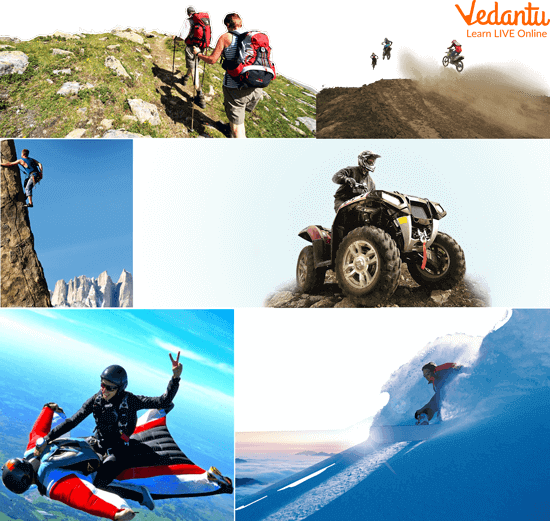
Why Learn Adventure Sports Names in English?
Knowing adventure sports names in English is useful for many reasons. It helps with:
- Writing school essays and assignments
- Speaking confidently in classroom discussions
- Describing hobbies or interests in interviews
- Understanding travel and news articles
- Building vocabulary for English exams
Popular Adventure Sports in India and Worldwide
Some adventure sports are loved by people all around the world. In India, these activities are also famous for school trips and holidays. Here are the top adventure sports:
- Rock Climbing – Hampi (Karnataka), Manali (Himachal Pradesh)
- River Rafting – Rishikesh (Uttarakhand), Teesta River (West Bengal)
- Paragliding – Bir Billing (Himachal Pradesh)
- Skydiving – Mysore (Karnataka), Aamby Valley (Maharashtra)
- Bungee Jumping – Rishikesh (Uttarakhand)
- Trekking – Valley of Flowers (Uttarakhand), Western Ghats
- Scuba Diving – Andaman & Nicobar Islands, Goa
- Zip Lining – Neemrana (Rajasthan), Mussoorie (Uttarakhand)
- Mountaineering – Himalayan States (Jammu & Kashmir, Himachal Pradesh, Uttarakhand)
Adventure Sports Name List with Pictures
Seeing the sports along with their names helps you remember them better. Here are some adventure sports with images for easy identification:
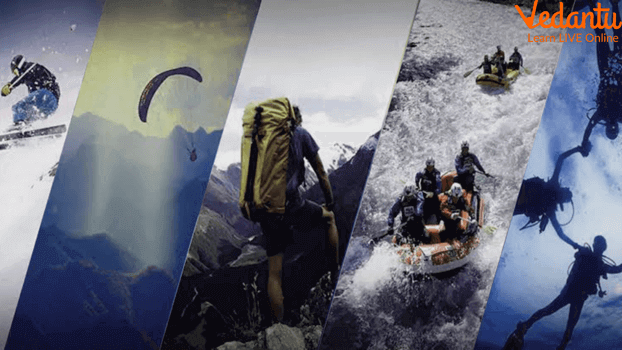
- Paragliding
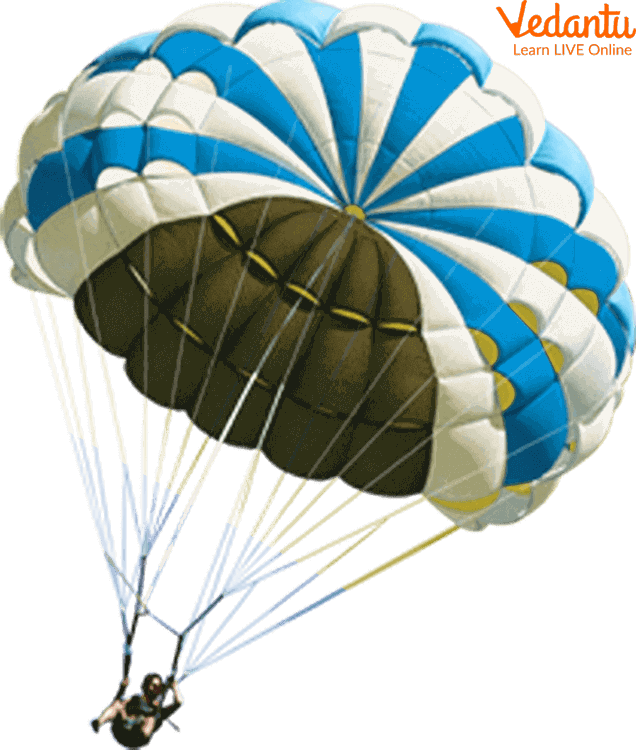
- Rafting
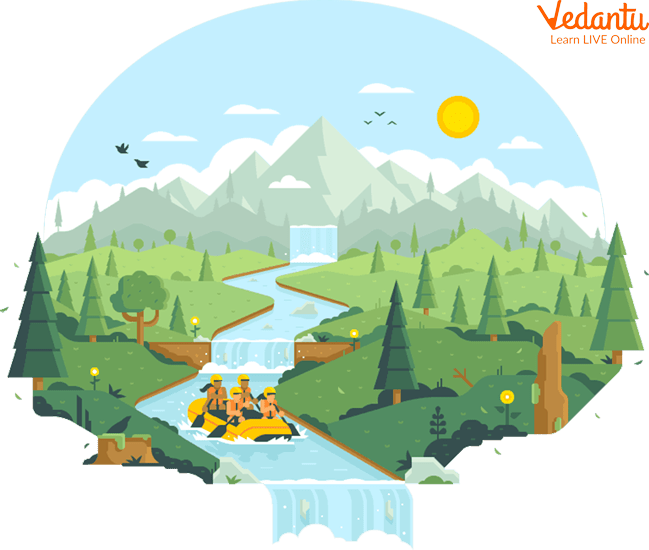
- Mountaineering
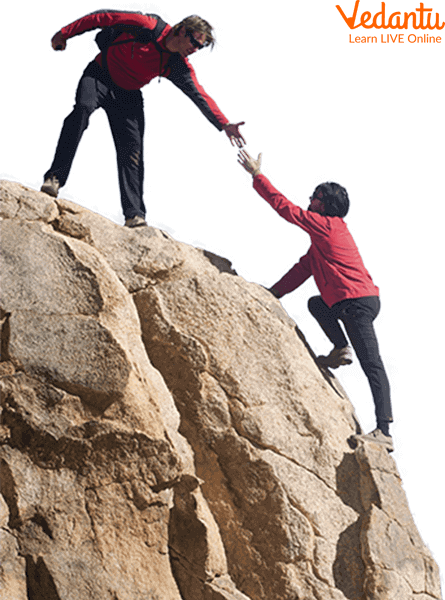
Adventure Sports Names in Hindi and English
For students who need bilingual lists for assignments, here are the names in both English and Hindi:
| English | Hindi |
|---|---|
| Rock Climbing | चट्टान पर चढ़ाई |
| Skydiving | स्काई डाइविंग |
| River Rafting | रिवर राफ्टिंग |
| Bungee Jumping | बंजी जंपिंग |
| Paragliding | पैरा ग्लाइडिंग |
| Mountaineering | पर्वतारोहण |
| Trekking | ट्रेकिंग |
| Scuba Diving | स्कूबा डाइविंग |
| Zip Lining | ज़िप लाइ닝 |
| Camping | कैम्पिंग |
Benefits of Adventure Sports Vocabulary
Knowing these words supports you in many ways:
- Helps write better essays and stories
- Prepares you for English Olympiads and competitions
- Makes classroom discussions easier
- Improves confidence in spoken English
- Useful for travel, reading and projects
To practise using these words, check out our Sports Names page or try writing about your favourite adventure sport. Vedantu supports you at every step of your English learning journey!
In summary, adventure sports names list important English words that help you describe, discuss and enjoy thrilling outdoor activities. These words support your school work, competitive exams, and general English vocabulary. Start learning and using them confidently in your writing and conversations.
FAQs on Adventure Sports Names List: Meanings, Types & Examples
1. What are adventure sports names in English?
Adventure sports, also known as extreme sports, are thrilling outdoor activities involving a high degree of risk and excitement. Popular examples include rock climbing, skydiving, bungee jumping, white-water rafting, trekking, and paragliding. These activities often involve specialized equipment and a significant level of physical exertion.
2. Which are the top 10 adventure sports in India?
The top 10 adventure sports in India are subjective and depend on personal preference, but popular choices include: trekking in the Himalayas, white-water rafting in Rishikesh, paragliding in Bir Billing, scuba diving in the Andaman Islands, rock climbing in Hampi, mountain biking in Ladakh, bungee jumping in Rishikesh, skydiving in Mysore, mountaineering in the Himalayas, and desert camping in Rajasthan. The popularity of specific activities can vary based on season and location.
3. What is the difference between adventure sports and regular sports?
The main difference lies in the level of risk and the environment. Adventure sports typically involve a higher degree of risk, often in unpredictable natural environments. They emphasize thrill-seeking and personal challenge. Regular sports, while requiring physical exertion and skill, generally have lower inherent risks and are often played in controlled environments. Examples of regular sports include cricket, football, and basketball.
4. Can you give examples of adventure sports with pictures?
Unfortunately, I cannot display images directly within this text-based format. However, a quick online image search for keywords like “rock climbing images”, “skydiving pictures”, or “white-water rafting photos” will provide many visual examples of popular adventure sports. Vedantu's website may also include a dedicated image gallery to help you further.
5. What is the most popular adventure sport in the world?
Determining the single most popular adventure sport globally is difficult due to a lack of comprehensive data. However, based on participation rates and global media attention, trekking, rock climbing, and white-water rafting are consistently ranked highly in popularity across many countries.
6. How do you pronounce difficult adventure sports names, such as ‘Paragliding’ or ‘Scuba Diving’?
Pronunciation can vary slightly depending on regional accents, but generally: Paragliding is pronounced /ˈpærəˌɡlaɪdɪŋ/ and Scuba Diving is pronounced /ˈskuːbə ˈdaɪvɪŋ/. Online dictionaries and pronunciation guides offer audio examples for accurate pronunciation.
7. Are adventure sports names different in British and American English?
Generally, the names of adventure sports remain consistent between British and American English. Minor variations in spelling or terminology might exist, but they are unlikely to cause significant confusion.
8. Which adventure sports are best for school projects?
Suitable adventure sports for school projects depend on the project's scope and requirements. Sports like trekking, rock climbing, or white-water rafting offer rich opportunities for research, exploring safety measures, environmental impact, and cultural significance. Choosing a sport with readily available information and resources is recommended.
9. What are the benefits of knowing adventure sports names in English?
Knowing adventure sports names enhances your English vocabulary, improves communication skills, helps in essay writing and project work related to sports, and aids in understanding international sports news and discussions. It is also beneficial for students preparing for competitive exams that assess vocabulary.
10. How to use adventure sports names in sentences or essays?
Use adventure sports names naturally within your writing. For example: “My favorite adventure sport is rock climbing.” Or “The team prepared meticulously for their white-water rafting expedition.” Always ensure correct spelling and context to maintain clarity and accuracy.
11. Can I get downloadable worksheets to practice adventure sports vocabulary?
Check Vedantu's website for downloadable resources. Many educational platforms offer vocabulary worksheets and quizzes focusing on sports and other topics. These resources can assist with vocabulary retention and comprehension.
12. What safety precautions should be taken when participating in adventure sports?
Always prioritize safety when engaging in adventure sports. This includes: • Choosing reputable and certified operators. • Receiving proper training and instruction. • Using appropriate safety equipment. • Following all instructions and guidelines from instructors. • Being aware of potential risks and limitations. • Assessing your physical fitness before participation. Never attempt an adventure sport beyond your skill level or comfort zone.















